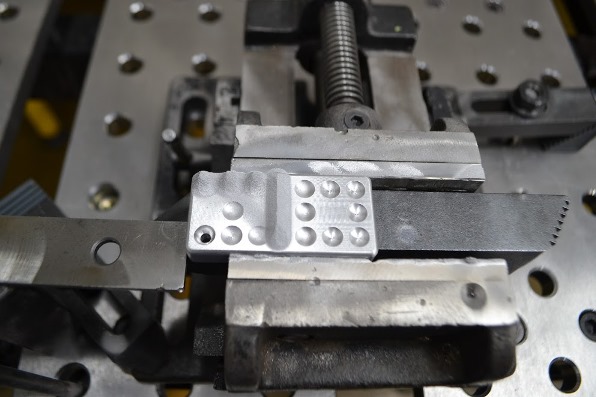The University of Akron (Akron, Ohio), Airborne Maintenance & Engineering Services (AMES) (Wilmington, Ohio), and additional partners are working to obtain U.S. Federal Aviation Administration (FAA) (Washington, DC) approval for a “cold spray” repair technique for corroded and worn parts on commercial aircraft.
Known as supersonic particle deposition (SPD), developers refer to the technology as a groundbreaking aircraft repair method for applying metal particles to rebuild the surfaces of corroded and worn parts.
“By extending the useful life of an aircraft’s parts, this public-private partnership initiative is anticipated to lead to the first FAA certification for full-scale commercial aircraft repair operations,” the University of Akron says in a statement.
Brady Templeton, president of AMES, says his organization was initially contacted by the university about two years ago to consider partnering with it on a study being conducted on aerospace corrosion.
How the Technology Works
The technique involves a high-pressure spraying process performed with a robotic arm, in which metal particles contained in a supersonic jet of an expanded gas make impact with a solid surface with sufficient energy to cause bonding with the surface.
This additive manufacturing process builds up and repairs the surface of the metal part without creating a heat-affected zone that would occur during welding or high-temperature thermal spray, according to the developers.
The partners say the cold-spray process essentially restores the part to its original blueprint dimension.
“This partnership brings together the university’s expertise in corrosion and materials science with the extensive experience that our partners have in aviation and technology to create an exciting opportunity,” says Rex Ramsier, senior vice president at Akron.
The partners expect the process to reduce both time and costs on aircraft maintenance operations.

Researched over Two Years
The partners have been researching and testing the technique over the past two years at Akron’s National Center for Education and Research on Corrosion and Materials Performance (NCERCAMP). The school operates the first-of-its-kind corrosion engineering program in the United States, and its center is designed to provide a multi-pronged approach to help government and industry develop solutions for problems related to corrosion and materials performance. NCERCAMP was established in 2010 by the U.S. Congress (Washington, DC) and Department of Defense (DoD) (Washington, DC).
Funding was provided by the state of Ohio and the National Center for Education and Research on Corrosion, a federally funded DoD program.
In addition to participation by Akron and AMES, a maintenance, repair, and overhaul (MRO) company, other partners on the project include aircraft engineering company SAFE, Inc. (Monument, Colorado) and plastic fabrication company U.S. Technology Aerospace Engineering Corp. (USTAE) (Canton, Ohio).
SAFE, Inc. is helping Akron navigate through the steps of the FAA’s robust testing program for certification, while USTAE has worked with AMES and NCERCAMP to physically install the SPD equipment at the AMES facility.
Next Steps
The first phase of the project is to prove the technology and get it certified by the FAA. To that end, the partners held a showcase event in late March in which demonstrations and test results involving the cold-spray process were shown at the Wilmington Air Park, a public-use airport where AMES is located.
Several prominent Ohio politicians attended the event.
“This technology in commercial applications creates significant ongoing opportunities for economic advancement through advanced manufacturing and job growth,” says Greg Smith, director of engineering for AMES.
The partners say FAA approval is expected in the very near future, after which the commercialization process for the cold-spray technology can begin.
“Once the goal of this [first phase] program is attained, the application of the process is limitless across the commercial aviation sector,” Templeton says.
Source: The University of Akron, uakron.edu.